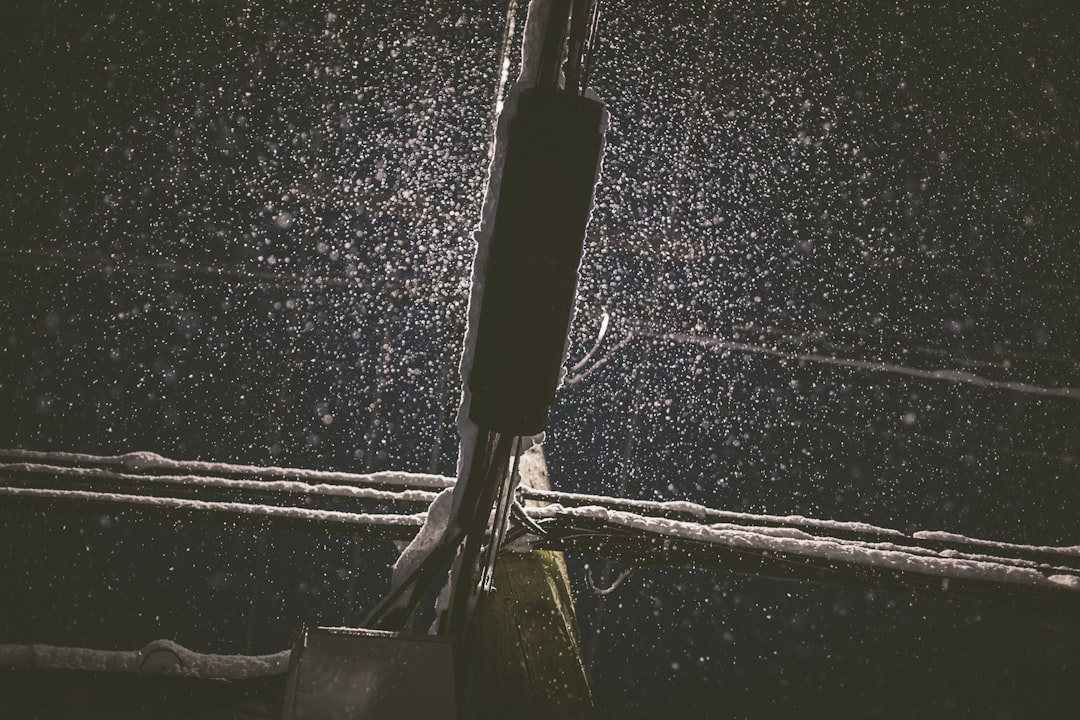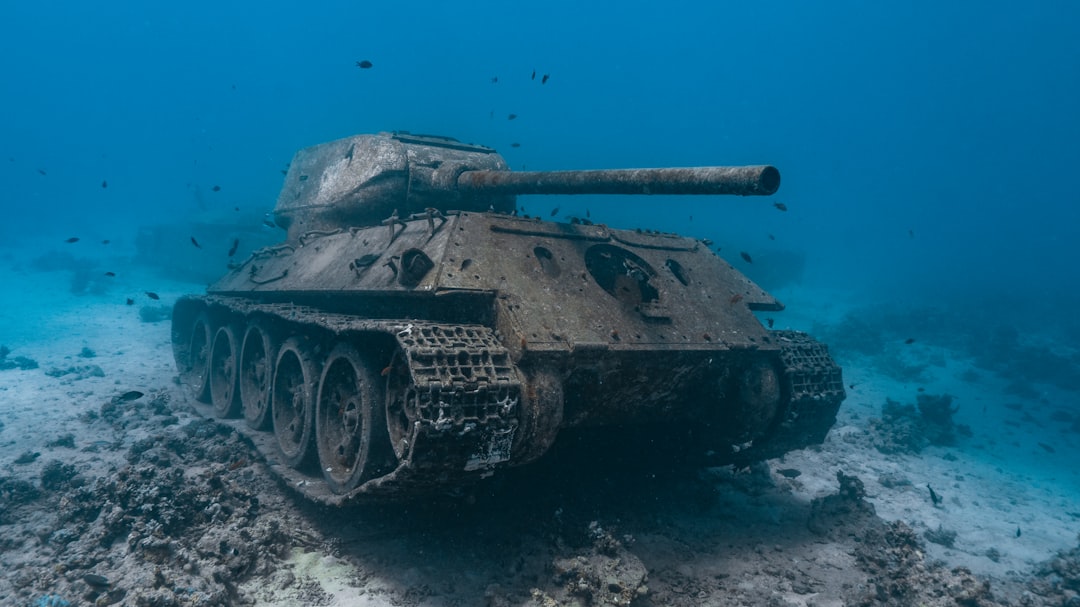

Engage prospects with a scan and streamline customer engagement with FREE QR code marketing tools by Sona – no strings attached!
Create a Free QR CodeFree consultation

No commitment

Engage prospects with a scan and streamline customer engagement with FREE QR code marketing tools by Sona – no strings attached!
Create a Free QR CodeFree consultation

No commitment
Tank cleaning services are experiencing a significant shift as industrial facilities and commercial operations demand faster, more compliant, and more transparent ways to manage routine maintenance and safety regulations. Whether focused on industrial tank cleaning, water tank maintenance, or tankless water heater cleaning, organizations increasingly struggle with analog processes such as manual logbooks, printed safety protocols, or outdated equipment tracking. These outdated methods create friction for both teams and clients, and many operations face the costly risk of missing high-value prospects when engagement goes unrecorded, leading to lost opportunities or lapses in service. For marketing teams bridging offline to online, see QR codes in marketing.
Regular tank cleaning brings measurable benefits: safer water supply, longer equipment lifespan, and reduced environmental risks associated with contaminants or residue. However, even with strong intentions, maintenance schedules, documentation, and regulatory compliance can often be lost in the shuffle between field and office staff. Incomplete or outdated data makes it difficult to personalize service, segment outreach, or ensure nothing is overlooked, resulting in missed follow-ups, inconsistent experiences, and sometimes regulatory fines. As environmental standards tighten and clients request proof of service, digital transformation is no longer a luxury but a necessity.
QR codes offer a simple yet powerful solution for this challenge. By embedding QR codes at every key touchpoint, tank cleaning businesses can capture and surface granular engagement signals, ensuring that every scan translates into actionable data. With the right approach, QR can turn every tank, service record, or safety checklist into an interactive, data-driven touchpoint, dramatically improving accountability, customer experience, and marketing ROI while closing the loop on gaps that previously left leads and compliance data untracked. Explore capabilities on Sona QR’s product overview.

QR codes bridge the gap between physical infrastructure and digital outcomes, making it easier to drive results like improved compliance, client transparency, and operational efficiency. For tank cleaning teams frustrated by manual logbooks, missing documentation, and disconnected field information, QR can resolve many hidden pain points while boosting productivity.
Analog processes such as printed SOP binders, sign-in sheets for confined-space entry, or clipboard inspection checklists are slow and error-prone. QR-enabled forms, dynamic SOP links, and scan-to-log capabilities replace these friction points with instant access, accurate data capture, and automated synchronization across your systems. The effect is immediate: fewer lost records, faster audits, and clearer communication with clients and regulators. If you need a simple way to capture feedback or incident reports, use Google Forms QR codes.
Here’s how to put QR to work:
Growth-focused operations teams find QR resolves the friction of analog processes, replacing paper hunting and manual updates with always-on, scannable access. Instead of relying on memory or scattered files, every tank, cleaning kit, and regulatory checklist becomes an entry point for digital insights, automated alerts, and integrated follow-up. And yes, Sona QR is built to support every step of this transformation.

Tank cleaning services face a unique blend of field-based and regulatory-driven challenges that demand reliable, actionable data capture. The work happens in industrial environments where connectivity can be inconsistent, paperwork can get damaged or misplaced, and time is tight. The lack of visibility into anonymous site activity means valuable engagement remains undocumented and unaddressed, while paper processes leave too much room for error.
From confined-space permits to chemical handling, safety data must be current and accessible. Clients and inspectors often want immediate proof of service history, technician certifications, and environmental compliance. QR codes make it easy to bridge these offline-to-online gaps with one scan, creating a consistent standard for how information is accessed, verified, and recorded at the point of work.
QR codes solve critical industry pain points:
When used on service tags, regulatory documents, safety signage, or equipment, QR codes empower both field staff and clients while overcoming the limitations of paper-based workflows. The result is a measurable reduction in rework, clearer ownership of tasks, and a more reliable record of what was done, by whom, and when.
Workflows in tank cleaning services often struggle with generic or incomplete documentation, leading to errors in scheduling, missed follow-up opportunities, and fragmented compliance records. Choosing the right QR format ensures every scan surfaces actionable data while removing the hurdles of manual entry or lost paperwork.
Different formats serve different purposes, and the best deployments mix them strategically. Field crews might need instant SOP access and checklists on mobile, clients may want to book service or review findings quickly, and inspectors need definitive, timestamped proof of compliance. With the right format and destination, a QR scan can handle each use case neatly.
Common QR code types include:
Dynamic QR codes are especially suited for this sector. They ensure destinations can evolve alongside regulatory shifts, equipment upgrades, or changing service offerings without reprinting. With a dynamic solution like Sona QR, tank cleaning teams can update destinations instantly, rotate messages by location, append UTM parameters for attribution, and integrate scans with CRMs to eliminate the risk of clients or regulators encountering outdated or incomplete data.

For many tank cleaning teams, missed leads or inconsistent follow-ups erode business growth. QR codes placed at high-impact touchpoints uncover new opportunities while cementing operational excellence by simplifying access to information and funneling engagement into trackable actions.
Growth is not only about net-new leads. It is also about retaining existing accounts, expanding contract scope, and boosting lifetime value. Thoughtful QR placement transforms your everyday assets into lead sources and retention engines, all while improving compliance readiness and reducing administrative load.
Each strategic placement supports both business development and regulatory rigor while creating clear feedback loops for continuous optimization. Over time, scan data will reveal which sites, industries, or job types are most engaged, helping you prioritize routes, staffing, and marketing spend.

Many tank cleaning providers lose valuable engagement signals during and after service delivery, increasing the risk of churn or missed upsell and cross-sell opportunities. QR codes surface this engagement data and anchor critical workflows, ensuring every stakeholder has the information needed to move forward.
Use cases should be mapped to the most common jobs you do and the most frequent questions clients ask. Start with areas where documentation is essential, where time is short, and where follow-up is often missed, then deploy QR codes to make the next step unavoidable and easy.
Each use case strengthens documentation, reduces blind spots, and translates customer actions into actionable follow-up. Over time, these consistent micro-interactions underpin both regulatory success and growth in client relationships.
One core challenge in tank cleaning is the difficulty of identifying which clients are most engaged or at risk, largely due to incomplete account-level data. Every scan is a signal that reveals intent and context. By deploying QR codes across your touchpoints, you can segment audiences automatically and tailor outreach with precision.
Useful audience distinctions in this sector often include industrial facility managers versus residential property managers, environmental health and safety leaders versus procurement contacts, and current contract clients versus one-time service buyers. QR-tagged journeys make it easy to detect which group is scanning and what they need next. For deeper strategy, see Sona’s intent data guidance.
Automated tagging and real-time data sync bring account-level clarity to audience building. With Sona QR, each code becomes a smart entry point into your funnel. This helps tank cleaning providers harness every interaction for smarter upsell, cross-sell, and retention without adding manual workload.
Disconnected campaigns, inconsistent messaging, and wasted ad spend are persistent issues when paper and digital touchpoints are not aligned. QR codes unify offline service with digital engagement, enabling real-time action and measurable data across every channel your clients encounter.
Think about where your brand already appears: trucks, equipment, invoices, job site signage, trade journals, and vendor events. Adding QR codes to these assets turns passive impressions into active conversations. With the right destinations and tracking, you can see what works and scale it.
QR codes serve as the offline onramp to your digital engine. With a centralized platform like Sona QR, you can manage all your codes, monitor performance, and sync scan data with your CRM and ad platforms to create a connected experience from first touch to signed contract.
Launching your first QR programs in tank cleaning does not need to be complex. A structured approach ensures you target the right use cases, design for your environment, and capture the data you need to prove impact.
Use the following steps to plan, deploy, and optimize a campaign that serves both compliance and growth objectives. Build momentum by starting with one or two high-visibility placements, then expand once your team is comfortable.
Selecting one focused use case keeps the scope manageable and makes it easier to measure early results. Once the team sees value, add more codes for adjacent processes or departments.
In most tank cleaning scenarios, dynamic codes are preferred. They future-proof your assets, enable experimentation, and connect scans to your CRM or analytics tools for optimization.
Thoughtful design and testing prevent the most common adoption issues. If a code fails in the field, users will not try again, so invest a few minutes upfront to protect scan rates.
Deployment is about meeting the user where they are. The same QR strategy will not fit every surface or stakeholder, so tailor locations and destinations to the job-to-be-done.
Optimization turns QR from a convenience into a performance engine. With data at your fingertips, you can refine creative, redeploy assets to better locations, and scale what works.
Each step closes gaps in documentation, reporting, and client engagement, making every scan a chance to improve service delivery and growth. A simple program, executed carefully, can transform how your field and office teams work together.
For tank cleaning services, the inability to attribute field interactions to business outcomes creates uncertainty about what works and where to invest. Tracking capabilities embedded in dynamic QR codes make every scan traceable from initial engagement to revenue, while also providing defensible compliance records.
Granular analytics reveal which channels and touchpoints drive results. You can pinpoint whether job site signage, equipment tags, direct mail, or fleet decals are producing the most bookings, reviews, and renewals. You can also see which service lines or geographies respond best and double down on those segments.
Sona is an AI-powered marketing platform that turns first-party data into revenue through automated attribution and data activation. With Sona QR and Sona, you can go beyond engagement metrics to connect scans with pipeline and revenue. Identity resolution and multi-touch attribution clarify how QR interactions contribute to opportunities and closed-won deals. For methodology, see Sona’s guides on offline attribution and measuring marketing’s influence, and learn how to prioritize accounts with account identification.
Over time, many providers encounter declining scan rates, unclear ROI, or inconsistent adoption by staff and clients. The most reliable way to sustain performance is to systematize how you deploy, measure, and optimize QR programs and to make them part of daily operations.
Selection and governance matter. Assign ownership for QR strategy, codify naming conventions, and establish review cadences so codes remain accurate, destinations stay fresh, and analytics stay clean. The following tips focus on the places and processes that matter most in tank cleaning.
You can generate and track your first QR codes—Start creating QR codes for free. Start small, measure results, and scale your most effective placements across fleets and facilities.

QR codes are practical tools, and the most effective programs come from real operational needs. These examples illustrate how providers turn everyday materials into digital access points that enhance compliance, safety, and growth. For additional ideas in facilities, see these creative QR uses.
The pattern is consistent across industries and facility types: codes go where intent is high, destinations match the task at hand, and analytics close the loop on outcomes. Use the ideas below as a starting point and adapt them to your workflows and client expectations.
These examples show how QR addresses industry pain points by clarifying records, surfacing intent, and making compliance easier to prove. Start with one workflow, validate adoption, and then extend your program to the next most valuable process.
Unlocking the full value of QR codes requires attention to detail in design, deployment, and measurement. Many pitfalls are avoidable with a bit of planning and a consistent operating rhythm.
The best teams treat QR like any other strategic channel: they set goals, standardize execution, instrument the data, and iterate. Use the tips below to avoid the usual snags and maintain a steady path to ROI.
By embracing these best practices and remaining vigilant against common pitfalls, tank cleaning providers can ensure QR codes deliver both operational and commercial value at every stage.
QR codes are redefining tank cleaning services by bridging the physical and digital, turning every surface and document into a launchpad for engagement, compliance, and growth. These tools close the long-standing gaps that arise from paper-based tracking, anonymous site activity, and disjointed client communications. With each scan, maintenance, regulatory, and customer engagement data flows directly into actionable insights.
The result is streamlined accountability, real-time compliance support, and a more personalized, consistent experience for both teams and clients. By thoughtfully integrating QR technology, supported by platforms like Sona QR and Sona, tank cleaning providers move beyond past limitations and build resilient, future-minded workflows ready to meet today’s operational and marketing challenges. Start by deploying a single high-impact use case, measure the impact, and expand with confidence as your team and clients experience the convenience and clarity of a scan-first approach.
QR codes have revolutionized tank cleaning services by transforming operational access and safety protocols into seamless, digital experiences. Beyond simplifying equipment identification and maintenance tracking, they empower providers to enhance compliance, reduce downtime, and deliver unmatched service transparency. Imagine instantly accessing detailed cleaning histories or safety checklists right on-site—streamlining workflows and boosting client trust simultaneously.
With Sona QR, creating dynamic, trackable QR codes tailored for tank cleaning is effortless. Update information in real time without reprinting, monitor scan activity to identify efficiency gaps, and link every scan to improved operational outcomes. This technology not only elevates customer experience but also drives higher retention and new business through smarter, data-driven service delivery.
Start for free with Sona QR today and unlock the full potential of QR codes to optimize your tank cleaning services, turning every scan into a safer, faster, and more profitable interaction.
Regular tank cleaning ensures a safer water supply, extends equipment lifespan, and reduces environmental risks from contaminants or residue.
The article does not specify exact cleaning intervals but emphasizes maintaining consistent schedules supported by accurate documentation and regulatory compliance.
The article focuses on digital solutions like QR codes to improve tank cleaning processes rather than specific cleaning techniques.
Use QR-enabled digital service records, client reviews via QR codes, and transparent compliance documentation to identify trustworthy tank cleaning providers.
Ensure access to current safety protocols, confined-space procedures, and lockout-tagout steps via QR codes to reduce errors and support consistent safety compliance.
QR codes digitize service records, safety protocols, and compliance checklists, enabling instant access, accurate data capture, better accountability, and seamless communication with clients and regulators.
Common types include web links to maintenance records, smart forms for service confirmations, vCards for emergency contacts, safety protocol links, app downloads, and SMS or email prefills for quick notifications.
Place QR codes on tanks, cleaning equipment, job site signage, service reports, invoices, chemical packaging, direct mailers, fleet vehicles, and event materials to maximize engagement and compliance.
QR codes provide timestamped, trackable proof of service and compliance, digitally link to updated safety documents, and simplify audit readiness by capturing accurate, accessible data.
Choose a focused use case, select static or dynamic QR code types, design and test for durability and usability, deploy codes strategically across channels, then track scans and optimize based on performance.
QR codes capture engagement signals to identify high-value clients, enable personalized follow-ups, encourage reviews, simplify rebooking, and convert physical assets into lead generation and retention tools.
Users can instantly access updated safety guidelines, confined-space entry procedures, lockout-tagout steps, and material safety data sheets through QR codes placed at key work points.
They eliminate errors from manual logbooks, prevent lost paperwork, enable real-time data synchronization, enhance traceability, and create audit-ready records accessible from the field.
Use weatherproof, chemical-resistant labels, high-contrast colors, appropriate sizing for safe scanning distance, clear call-to-action text, and test in real-world conditions including PPE use.
By using platforms like Sona QR to monitor scan frequency, location, device, and campaign data, linking scans to CRM systems, and measuring conversion events such as form submissions and rebookings.
Avoid generic landing pages, ensure durable and visible codes, provide user training, measure meaningful outcomes beyond scans, and select compliant, privacy-conscious platforms.
Use Sona QR's trackable codes to improve customer acquisition and engagement today.
Create Your FREE Trackable QR Code in SecondsJoin results-focused teams combining Sona Platform automation with advanced Google Ads strategies to scale lead generation

Connect your existing CRM

Free Account Enrichment

No setup fees
No commitment required

Free consultation

Get a custom Google Ads roadmap for your business






Launch campaigns that generate qualified leads in 30 days or less.
